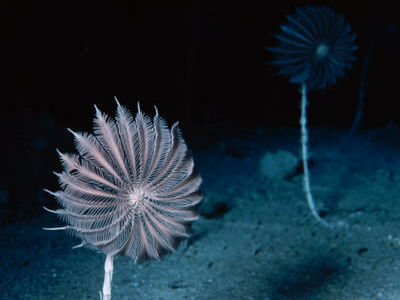5 types of animals that have 'non-red blood' such as green or transparent blood and the reasons why

The red blood that most animals, including humans, have comes from
5 Animals Whose Blood Isn't Red | HowStuffWorks
https://animals.howstuffworks.com/animal-facts/5-animals-whose-blood-isnt-red.htm
◆1: Green Lizard
Lizards of the genus Prasinohaema, whose name means 'green blood' in Greek, are called ' green lizards ' in Japanese, and as the name suggests, they have lime green blood.
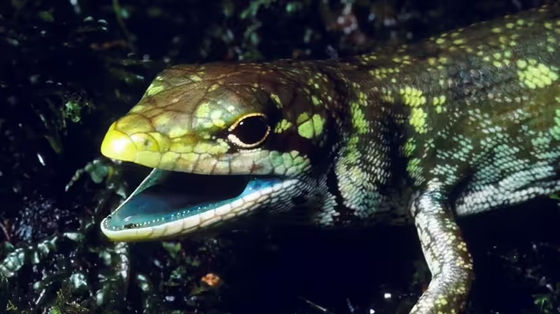
These lizards, which live in New Guinea, have greenish tongues, muscles, and bones, but like humans, their blood is rich in hemoglobin. Despite this, blood is not red because it contains large amounts of
In both humans and lizards, biliverdin is produced when red blood cells age and break down, but because it is a toxic substance, it is usually filtered out of the blood. On the other hand, the blood of a green lizard contains biliverdin at a level that would kill a human, so the red color of hemoglobin is overwritten and the blood appears green.
A study published in 2018 identified six species of green-blooded lizards and found that each species is distantly related but not closely related to the other. The fact that six species of lizards with the rare characteristic of green blood have evolved independently suggests that there is some benefit to this, but it is unclear what exactly that benefit is. One theory is that this special blood helps kill parasites in the body, but more research is needed to confirm this.
◆2: Kooriuo
Many of the 16 types of fish in the Oriolidae family that have been identified so far live in the cold waters near Antarctica, where water temperatures can drop as low as -1.9 degrees Celsius.
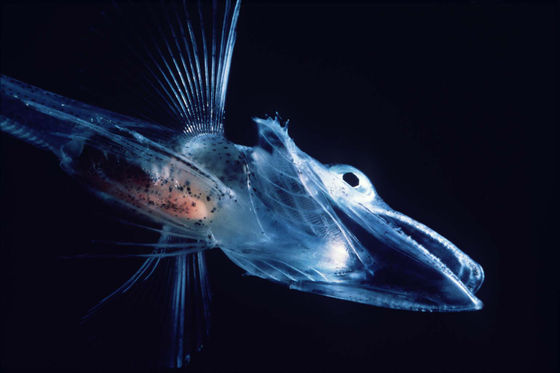
In extreme environments where fresh water would freeze, a high percentage of red blood cells can cause blood to become dangerously concentrated and difficult to circulate. Therefore, fish living in colder regions have a lower proportion of red blood cells than fish in warmer regions. An extreme example of this is the icefish, which has no hemoglobin in its blood.
Ditlev Rustad, the biologist who first discovered the blue-bellied fish in 1928, is said to have been surprised to find that the blood of the blue-bellied fish he dissected was colorless and transparent.
The only vertebrate that does not have hemoglobin, the icefish is able to survive because of the cold ocean water. The lower the water temperature, the more dissolved oxygen is contained in water, so the cold ocean water where the bluefin fish inhabits has more oxygen dissolved in it than the warmer ocean. Thanks to this, the icefish is able to directly dissolve the oxygen it takes in into the blood and distribute it to every corner of its body, without having to combine it with hemoglobin.
◆3: Octopus
All vertebrates other than the icefish have hemoglobin, but many invertebrates use another protein called
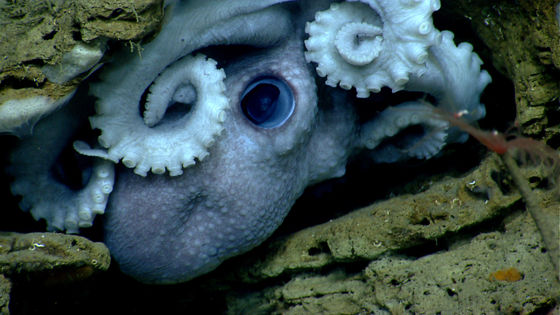
by
While hemoglobin contains iron atoms, hemocyanin contains copper, which causes blood to appear blue when it stores oxygen. Invertebrates that utilize hemocyanin in the blood include crustaceans such as shrimp and crabs, arthropods such as spiders and scorpions, and molluscs such as shellfish, squid, and octopus. In particular, octopuses and squid use three hearts to circulate blood containing hemocyanin throughout their bodies.
In oxygen-poor deep-sea environments, hemocyanin is better suited than hemoglobin for transporting precious oxygen. Hemoglobin also helps regulate the salt concentration in the blood, matching that of the surrounding seawater.
However, hemocyanin also has drawbacks. Research has found that octopuses have difficulty adapting to changes in acidity, as even small changes in the pH of local waters can reduce the ability of hemocyanin to bind oxygen. I am.
4: Horseshoe crab
Although the name 'horseshoe crab' suggests that it is a member of the crab family, horseshoe crabs are more closely related to spiders, and like spiders, they have bluish blood that contains hemocyanin.
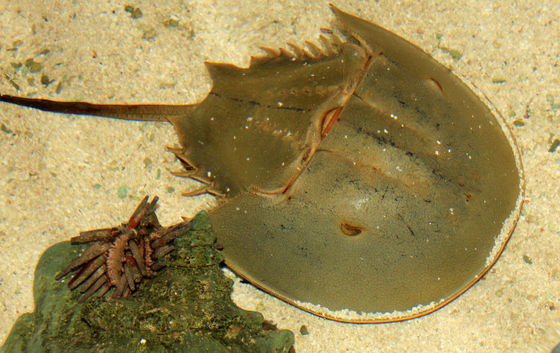
What makes the horseshoe crab's blue blood so special are its moving cells called amoeba cells. When this amoeba cell finds a bacterium, it secretes a rapidly solidifying gel that envelops the bacterium. This function allows horseshoe crabs, which do not have white blood cells, to prevent pathogens that have entered their bodies from spreading.
Amoeboid cell components, also known by experts as ``limeshoe crab amebocyte lysate (LAL)'', are a godsend to humanity. Medicines such as injections and IV fluids must pass contamination tests using horseshoe crab blood before they can be used on humans. Horseshoe crab blood, which rapidly hardens in response to toxins produced by bacteria, allows humans to safely use vaccines.
Unfortunately for horseshoe crabs, blood must be drawn from a live horseshoe crab to perform this test. Therefore, experts are rushing to develop reagents that can replace live horseshoe crab blood.
The production of injections and drips continues to rely on ``live blood of horseshoe crabs'', and there are signs of the emergence of new reagents as substitutes - GIGAZINE

◆5: Brachiopods
Brachiopods that live in the sea look similar to shellfish, but they are different; they have two shells, one on the ventral side and the other on the back. Brachiopods, which live in various sea areas and filter and feed on microorganisms and organic matter in the water, are representative of 'living fossils' that have survived without changing their appearance since the Cambrian period.
Modern brachiopods transport oxygen not with hemoglobin or hemocyanin, but with a different protein called hemerythrin. Like hemoglobin, hemerythrin contains iron atoms, but in a different arrangement within the molecule. Blood containing hemerythrin is colorless or pale yellow when deoxygenated, and turns purple or pinkish when oxygen is absorbed.
Other worm-like marine creatures called astrostomes also have this kind of blood.
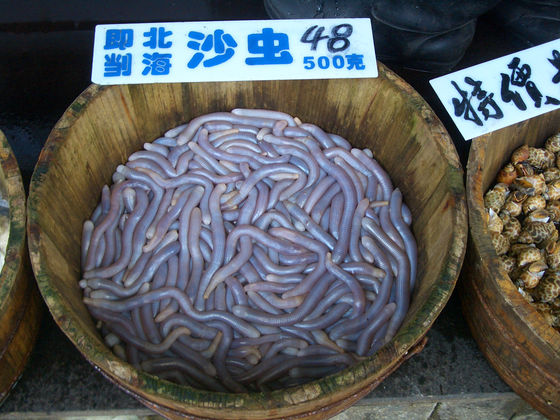
by Vmenkov
Polychaetes are also worm-like creatures that live in water. Some polychaetes have red blood, while others, such as the green lizard, have green blood, but instead of hemoglobin, the latter carry oxygen using a protein called chlorocrion . Chlorokrion is similar to hemoglobin in that it combines with oxygen through iron atoms, and when it is dark it looks red, but when it is pale it looks bright green.
Related Posts:
in Creature, Posted by log1l_ks


